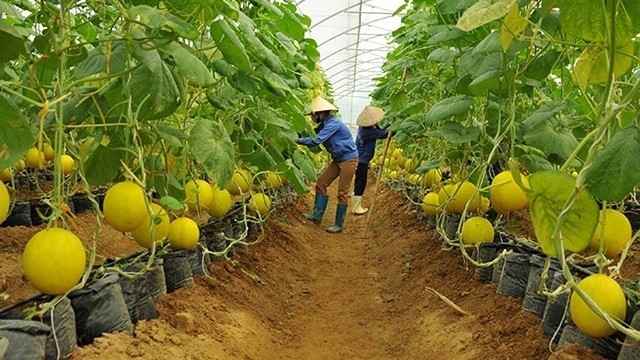In 2014, scientists at the Institute of Regional Research and Development (IRRD) ventured to export ten tonnes of Luc Ngan lychees to Japan. It was surprising that such a demanding market like Japan received the fruit with a favourable reception.
The reason why Luc Ngan lychees were accepted and bought at a high price by Japanese consumers was the use of a freezing method known as the cells alive system (CAS). But that result did not come from CAS only - the IRRD had also made great efforts to pick out lychees grown in compliance with Vietnam’s own good agricultural practices.
One US dollar can buy 2.5 lychees in the Japanese market and up to 60 in Vietnam. This example shows the importance of science and technology as well as good practices in enhancing the quality of agricultural exports.
IRRD Director Le Tat Khuong told us a bit of good news that in early 2016, the institute had succeeded in securing export markets for lychees and many other agricultural goods, including the US, the Republic of Korea and Australia, after employing the CAS method.
Fifteen years after the Ministry of Science and Technology began implementing the Rural and Mountainous Programme, thousands of scientists were dispatched to local communities across the country to transfer technology and help farmers build new production models. The programme succeeded in enhancing the quality of plants, animals and increasing income for participating households as well as arming local farmers with knowledge and equipment.
On December 17, 2012, the prime minister signed Decision 1895, approving the high-tech agricultural development programme as part of the national high-tech development programme towards 2020.
Under this decision, during the 2016-2020 period, Vietnam will establish and develop about 200 agricultural enterprises employing advanced technology as well as an additional 2-3 high-tech agricultural zones in each province and key economic region. This is a practical national-level programme to not only ensure food security for Vietnam but also lay the foundations for growing high-value agricultural produce, meeting the export demand when the Trans-Pacific Partnership (TPP) and EU-Vietnam Free Trade Agreement (EUVFTA) come into effect.
According to Professor Nguyen Ngoc Kinh at the Vietnam Union of Science and Technology Associations, agricultural exports rely on a variety of factors, including seeds, seedlings, methods of cultivations, harvest and preservation as well as sales promotion.
Watching the Rural and Mountainous Programme and the operations of agricultural businesses over the past 15 years, we have noticed that the efficiency of technology transfer in many places has fallen short of expectations because of local residents’ limited knowledge. Projects aimed at producing commodities are not carried out on a large scale and do not follow a closed process from developing materials regions to preliminary processing, processing and bringing products to domestic and foreign markets. Much Vietnamese agricultural produce, though better in quality than similar products from other countries, come at a disadvantage due to poor brand promotion.
According to Minister of Science and Technology Nguyen Quan, when participating in the TPP, Vietnam has clear advantages when exports are exempted from tax and geographical indications are protected. Previously any foreign enterprise could register their products under Vietnamese names such as Phu Quoc fish sauce and Buon Ma Thuot coffee but these geographical indications will now be protected under the TPP. Therefore, Vietnamese enterprises should register their products as soon as possible to enjoy this protection.
The formation of high-tech agricultural regions and enterprises in the spirit of Decision 1895 has created opportunities to mobilise human resources at the grassroots level, concentrate investment on plants and animals which are local strengths, exercise intellectual property rights and promote brands of agricultural exports.
















